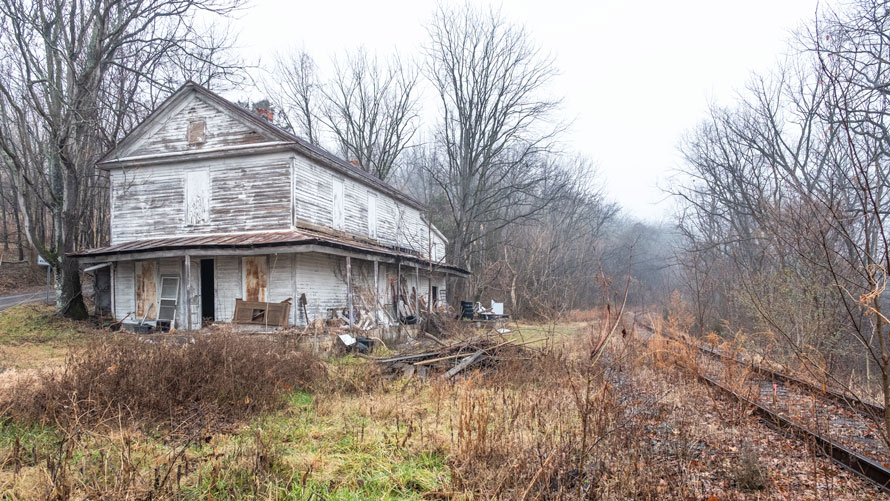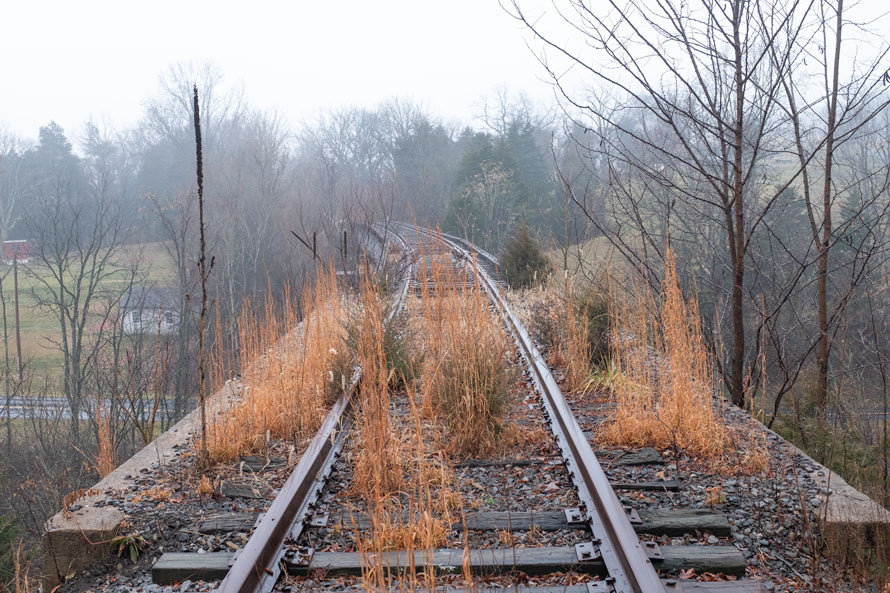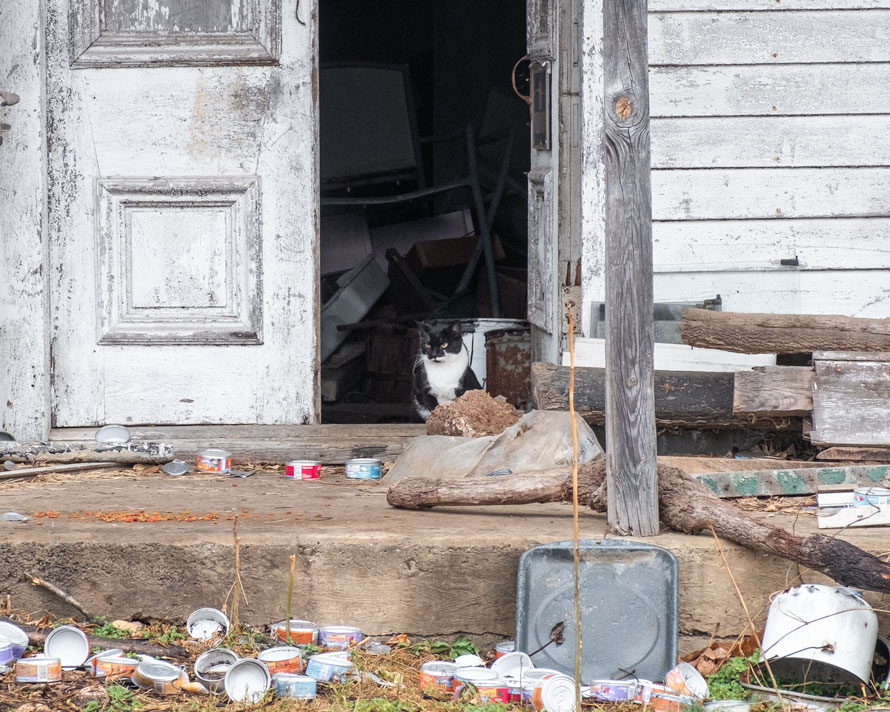
On a cold and rainy afternoon in late December, 2019, I stood on the railroad tracks in the small village of Fishers Hill, in the Shenandoah Valley of Virginia. I was surrounded by weeds, and distances were lost in mist. Behind me, the tracks crossed over Tumbling Run, and before me stood a derelict, two-story, gable-roofed frame building. One one side, the tracks; on the other side, Depot Road.
The Manassas Gap Railroad arrived in Fishers Hill around 1855, making it possible to move agricultural produce and heavy freight to Alexandria, Virginia and by connection to Washington and other eastern cities. Travel by wagon, which took several days and was highly dependent on the weather, could now be accomplished in less than a day at a much lower cost.
As was often the case during the development of railroads in the 19th Century, the genealogy of this line is complicated. After the Civil War, the Manassas Gap merged with the Orange and Alexandria to form the Orange Alexandria & Manassas Railroad (OA&M) and the line was extended south to Harrisonburg, Virginia in 1868. In 1872 the Orange, Alexandria & Manassas merged with the Lynchburg & Danville to form the Washington City, Virginia Midland & Great Southern (WCVM&GS). An 1873 WCVM&GS timetable shows passengers leaving Alexandria at 8:00 a.m., reaching Strasburg, Virginia at 1:30 p.m. and Harrisonburg at 4:40 p.m. This train would have passed through Fishers Hill shortly after departing Strasburg. The WCVM&GS went into receivership in 1876 and was reorganized by the Baltimore & Ohio as the Virginia Midland Railroad. Most of this line was later acquired by Southern Railway.

Fishers Hill is primarily remembered as the site of a significant Civil War battle (see Battle of Fishers Hill) which took place on September 22, 1864. The defeat of Confederate forces at Fishers Hill left the northern Shenandoah Valley unprotected, allowing General Sheridan to begin his campaign of destruction that would become known as “The Burning.”
After the Civil War, the Fisher Hill community became a thriving village with two carpenter shops, a general store, a distillery, a blacksmith shop, a carriage maker and a grist mill and sawmill operation. By the early 1900s, Southern Railway passenger trains served the village.
The Fishers Hill Store and Post Office dates from around 1880 . The village was awarded a Post Office in 1884 which was located in the store. In all likelihood, the Fishers Hill Store also served as the railroad depot.
As I got back into my car to leave, I spotted a cat sitting in the open doorway to the old building. I sat for a minute and tried to imagine life in Fisher Hill at the turn of the century. A whistle blows as the afternoon train crosses the bridge and slows in front of the store. William Christman, the proprietor of the store stands in the doorway to watch the flurry of activity in the smoke and steam. Perhaps there was a cat at his feet, not intimidated by the noise and smoke.

The cat in the doorway amid the litter and neglect paid no attention to me. Maybe he dreams that one day a train will stop here with a boxcar full of cat food. But the tracks are rusty and overgrown, and as I drive away, a black and white cat in my rear-view mirror is the only sign of life on Depot Road.
Edd Fuller – Photographs and text Copyright 2020
Historic information about Fishers Hill and the railroad during this time was taken from the Shenandoah County Historic Resources Survey Report.
Nice post and thanks. Among the litter appear to be quite a few empty cat food cans so someone is taking care of the feline. I will try to take a look at this location next time I am up that way.
Excellent piece thank you
I took a look at some railroad maps to find this location and one map shows this line to have been active in 2015. When did I go out of service?
Bill, I really don’t know. I photographed along this line in 2017 and it looked like there was still some activity from Harrisonburg to Broadway, and maybe to Timberville. Mount Jackson to Strasburg was out of service at that time. Other than being overgrown, most of the track and roadbed seem to be in pretty good shape. Of the original Manassas Gap Railroad that ran from Manassas to Front Royal to Strasburg and down to Woodstock, the only portion that is in service as far as I know is the segment from Manassas to Front Royal, which is the Norfolk Southern B-Line and sees several trains a day.
Thanks! Wonderful!
If you’re ever up that way again stop at the white house on the outer side of the bridge and my 94 year old grandfather William Baker can fill you in on all the history of fishershill.